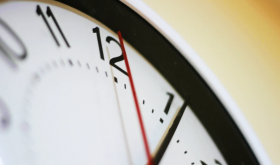Identifying Time Wasters in Your Daily Routine
Every professional’s day is riddled with hidden time-sinks, from excessive email checking to unnecessary meetings. Identifying these time wasters is the first step in reclaiming your day. By conducting a thorough analysis of where and how time is spent, employees and managers alike can pinpoint activities that contribute least to productivity.
Armed with this knowledge, strategies can be developed to minimise or eliminate these inefficiencies. This might involve setting specific times for checking emails, streamlining communication channels, or cutting down on redundant tasks that technology can handle.
Setting Realistic Goals with Time Analysis Insights
Time analysis provides a factual basis for setting achievable goals. By understanding how long tasks actually take versus how long we think they take, we can set more accurate targets for project completion and daily workloads.
This realistic approach to goal setting can help in prioritising tasks, managing expectations, and reducing workplace stress. It also allows for better project planning, as timelines are based on concrete data rather than optimistic estimates.
Utilising Time Tracking Tools for Maximum Efficiency
Time tracking tools are essential for capturing accurate work data. These tools can range from simple apps that log hours to comprehensive systems that integrate with project management software.
By utilising these tools, businesses can automate the time tracking process, ensuring accuracy and consistency. They also provide employees with insights into their work habits, allowing for self-improvement and more efficient time management.
Analysing Data to Refine and Optimise Workflows
Collecting time data is just the beginning. The real value lies in analysing this data to identify trends, bottlenecks, and opportunities for workflow optimization. This analysis can reveal the peak productivity periods of employees, the average time taken for various tasks, and potential areas for process improvement.
By continuously refining workflows based on time tracking analysis, businesses can create a more efficient and agile work environment. This ongoing process ensures that operations are as streamlined as possible and that employees are working at their highest potential.
Implementing Time Analysis for Continuous Improvement
The ultimate goal of time analysis is to foster an environment of continuous improvement. By regularly reviewing time tracking data, companies can adjust their strategies to meet changing demands and identify new ways to increase efficiency.
This commitment to continuous improvement through time analysis can lead to a culture of productivity where employees are encouraged to optimise their time and contribute to the overall success of the organization.









